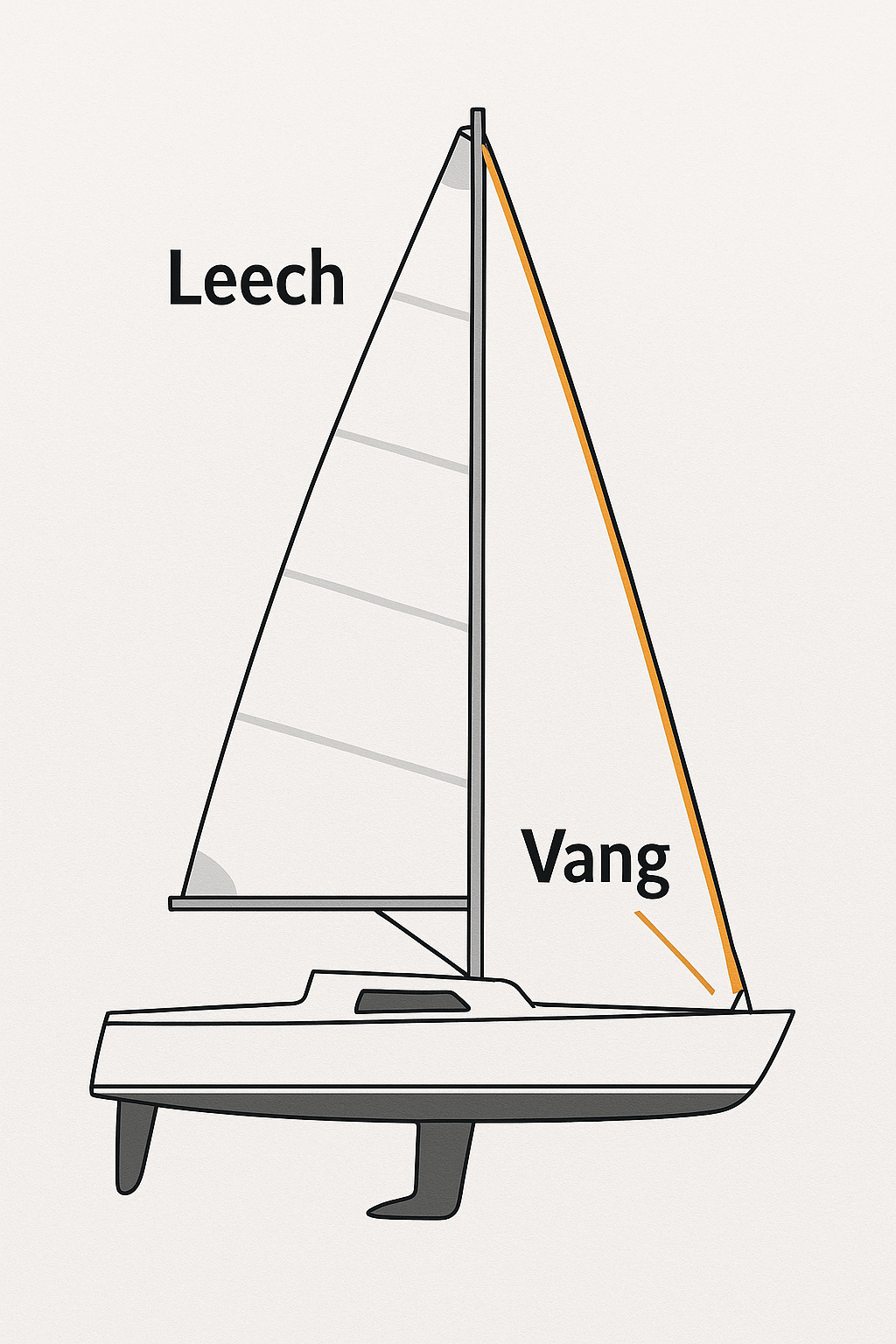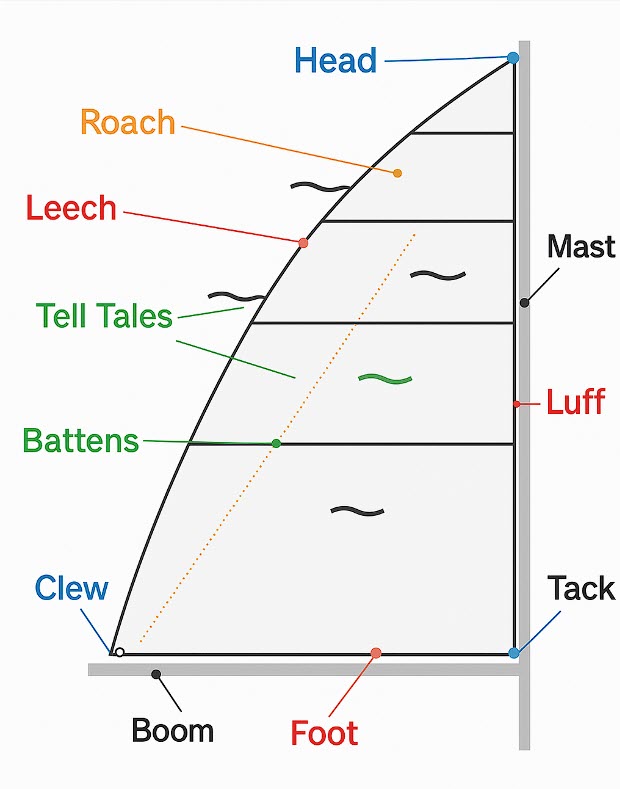Leech: The Trailing Edge of the Sail, Which Is Affected by the Vang’s Tension
Definition: The leech is the trailing edge of a sail, extending from the head (top corner) to the clew (bottom corner) of the sail. It is the edge of the sail that is furthest from the mast and plays a crucial role in shaping the sail and controlling its performance. The tension on the leech is influenced by various sail controls, including the vang, which helps manage the sail’s twist and overall aerodynamic efficiency.
Understanding the Leech: In sailing, the leech is a critical component of the sail’s structure and function. The leech's tension determines how tightly or loosely the sail is set, which directly impacts the sail's shape and effectiveness in catching the wind. If the leech is too loose, it may flutter or flap, causing a loss of efficiency and potential damage to the sail. On the other hand, a tightly controlled leech helps maintain an optimal sail shape, reducing drag and increasing speed.
How the Leech Works:
Tension Control: The leech's tension is managed using the vang, mainsheet, and sometimes the backstay. By tightening the vang, the sailor pulls the boom downward, which in turn tightens the leech and reduces sail twist. This is particularly important in strong winds, where a flatter sail is more efficient. In lighter winds, easing the vang allows more twist in the leech, creating a fuller sail that can capture more wind.
Sail Shape: Properly tensioned, the leech helps maintain the correct sail shape, keeping the sail smooth and preventing excess flutter. This control is essential for maximizing lift and minimizing drag, which improves the boat’s performance.
Applications in Sailing:
Upwind Sailing: When sailing upwind, the leech's tension is critical for maintaining a flat sail shape that reduces drag and helps the boat point closer to the wind.
Downwind Sailing: When sailing downwind, the vang is often used to prevent the boom from lifting, which helps maintain the correct leech tension and keeps the sail from becoming too loose.
Sail Trim: Adjusting the leech tension is a key part of sail trim. Proper leech tension helps optimize the sail's aerodynamics, ensuring efficient use of wind power.
Examples of Usage:
"We need to tighten the vang to control the leech and reduce sail twist as we head upwind."
"If the leech is fluttering, it might indicate that we need to adjust the vang or mainsheet for better tension."
"Easing the vang will allow more twist in the leech, which is useful in light wind conditions."
Visual Representation:
Image Description: Diagram of a sailboat showing the leech of the mainsail, highlighting its location along the trailing edge and its relation to the vang.
Importance in Sailing: The leech is a vital part of the sail’s overall structure, significantly impacting the sail’s shape and performance. Proper management of leech tension ensures that the sail remains efficient and effective in various wind conditions. Understanding how to adjust the leech using the vang and other sail controls is essential for optimizing sailing performance.
Related Terms:
Vang: A line or tackle system used to control the boom’s vertical angle and the tension on the leech.
A line or tackle system used to control the boom’s vertical angle and the tension on the leech.
Luff: The leading edge of the sail, where tension is applied to maintain the sail’s shape.
Foot: The bottom edge of the sail, running from the tack to the clew.
Outhaul: A line used to adjust the tension along the foot of the sail, also affecting the sail’s overall shape.
Conclusion: The leech is the trailing edge of a sail and is critical for controlling sail twist and maintaining the sail’s aerodynamic shape. By managing leech tension with tools like the vang and mainsheet, sailors can optimize the sail’s performance, ensuring better speed, balance, and control. Proper leech management is a key skill for effective sail trim and overall boat performance.

